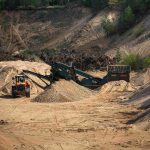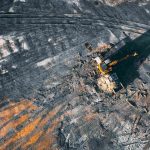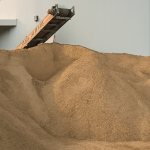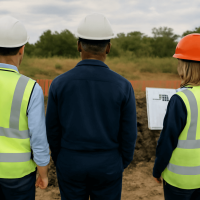In the modern construction and resource recovery industry, crushing and screening stand as two of the most critical processes. These operations not only reduce the size of raw materials but also transform them into valuable aggregates suitable for construction, road base, and landscaping. For regions like Western Australia, where infrastructure and development projects continue to expand, the importance of efficient and sustainable crushing and screening cannot be overstated.
Companies such as Peel Resource Recovery provide essential crushing and screening services, ensuring that construction materials are processed responsibly, reducing waste, and supporting a circular economy. By recycling materials and refining them into usable aggregates, these services contribute to both economic efficiency and environmental sustainability.
This article explores the functions of crushing and screening, their applications in construction and industry, their role in sustainable development, and why they are essential for Western Australia’s growth.
Understanding Crushing and Screening
Crushing
Crushing is the process of reducing large chunks of raw material—such as concrete, rock, or demolition waste—into smaller, manageable sizes. Using heavy-duty machinery like jaw crushers, cone crushers, and impact crushers, the material is broken down into aggregates suitable for further processing or direct use.
Crushing ensures that waste from construction and demolition projects is not discarded in landfills but instead repurposed into valuable products for roadworks, building foundations, and landscaping.
Screening
Screening complements crushing by sorting materials into specific sizes and grades. Through vibrating screens and sieves, crushed materials are separated according to particle size, ensuring that only aggregates meeting the required specifications are delivered for use.
This step is critical because it ensures quality and consistency, providing builders and contractors with reliable materials tailored to their needs.
Applications of Crushing and Screening
Crushing and screening services have broad applications across industries, including:
-
Road Construction
Recycled aggregates are essential in creating strong, durable road bases, ensuring safety and longevity. -
Commercial and Residential Development
Crushed concrete and rock provide stable foundations for housing, office complexes, and industrial facilities. -
Landscaping Projects
Screened aggregates are widely used in gardens, parks, and public spaces for pathways, drainage, and aesthetic design. -
Mining and Resource Recovery
In Western Australia’s resource-rich environment, crushing and screening help repurpose mining byproducts into usable aggregates. -
Waste Diversion from Landfill
By processing construction and demolition debris, these services significantly reduce the volume of waste sent to landfill.
Benefits of Crushing and Screening
1. Environmental Sustainability
Recycling materials through crushing and screening reduces the need for natural resource extraction. This approach helps conserve Western Australia’s natural environment and aligns with the principles of sustainable construction.
2. Cost-Effective Solutions
Using recycled aggregates from crushing and screening lowers material costs for contractors, providing affordable alternatives to newly quarried stone.
3. Quality and Reliability
Screened materials are graded and consistent, ensuring they meet engineering and building standards.
4. Circular Economy Contribution
Crushing and screening enable a circular construction economy, where waste becomes a resource, reducing reliance on new raw materials.
Sustainable Practices in Western Australia
Sustainability is now at the core of construction practices in WA. Crushing and screening services are central to these practices, ensuring that building projects minimize environmental impact while maintaining efficiency.
Peel Resource Recovery leads the way by offering responsible resource recovery solutions, turning demolition and construction waste into aggregates that fuel new developments. Their services help clients meet environmental standards while reducing project costs.
The Australian Government Department of Climate Change, Energy, the Environment and Water emphasizes the importance of resource recovery in reducing emissions and conserving ecosystems. Crushing and screening are vital processes in achieving these goals, making them a cornerstone of sustainable development.
The Role of Crushing and Screening in WA’s Growth
Western Australia continues to expand its infrastructure, from highways and bridges to housing developments and commercial zones. This growth demands massive volumes of construction materials. By integrating crushing and screening into the supply chain, WA ensures a steady flow of high-quality aggregates while reducing environmental strain.
Moreover, these processes are key to maintaining Western Australia’s global reputation for resource efficiency. By recycling and reusing materials, the state reduces landfill dependency and positions itself as a leader in sustainable construction.
Choosing the Right Crushing and Screening Provider
When selecting a provider for crushing and screening services, it is essential to consider:
- Experience and Expertise: Providers with a proven track record in WA’s construction industry.
- Quality Control: Assurance that materials meet Australian standards for safety and durability.
- Sustainability Commitment: Companies prioritizing eco-friendly processes and resource recovery.
- Capacity and Reliability: The ability to handle projects of any scale while meeting deadlines.
Peel Resource Recovery stands out as a trusted name in this field, delivering reliable, sustainable, and cost-effective solutions across Western Australia.
The Future of Crushing and Screening
As construction demands increase, crushing and screening will continue to evolve with advanced technologies and stricter sustainability standards. Automation, AI-driven equipment, and improved energy efficiency are set to revolutionize how these services are delivered.
For Western Australia, this means even greater efficiency, reduced costs, and enhanced sustainability in future infrastructure projects.
Conclusion
Crushing and screening are not just technical processes—they are essential pillars of modern construction and resource recovery. By transforming waste into valuable aggregates, these operations reduce environmental impact, lower costs, and provide reliable materials for Western Australia’s ongoing development.
With experienced providers such as Peel Resource Recovery, contractors gain access to sustainable, high-quality solutions that support both economic growth and environmental responsibility. Backed by government initiatives promoting resource recovery, crushing and screening will continue to shape a cleaner, greener, and more resilient Western Australia.





